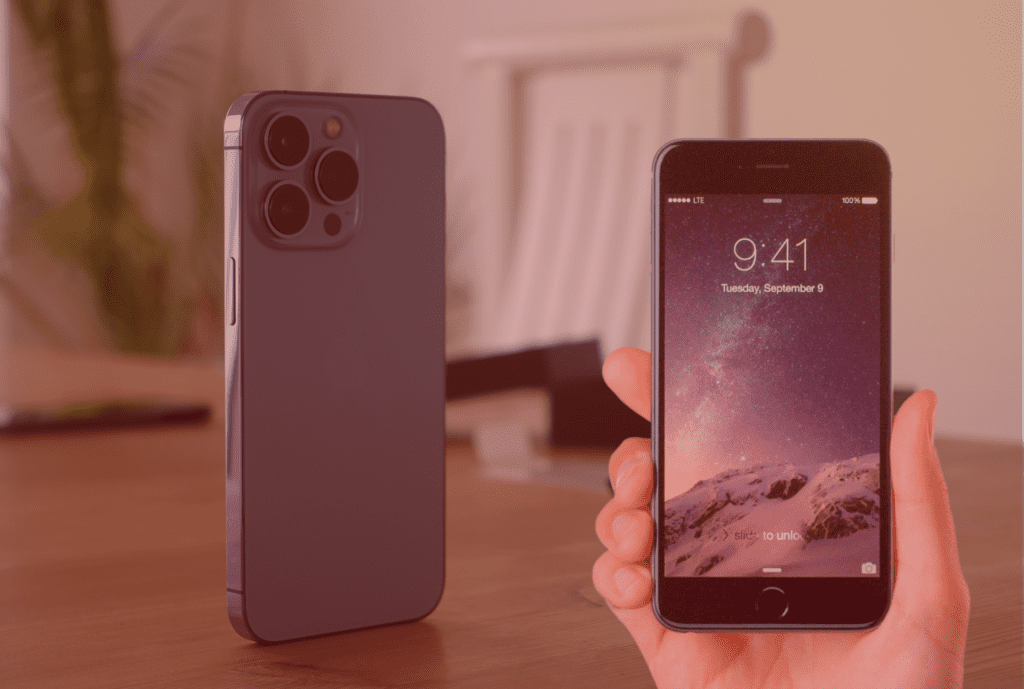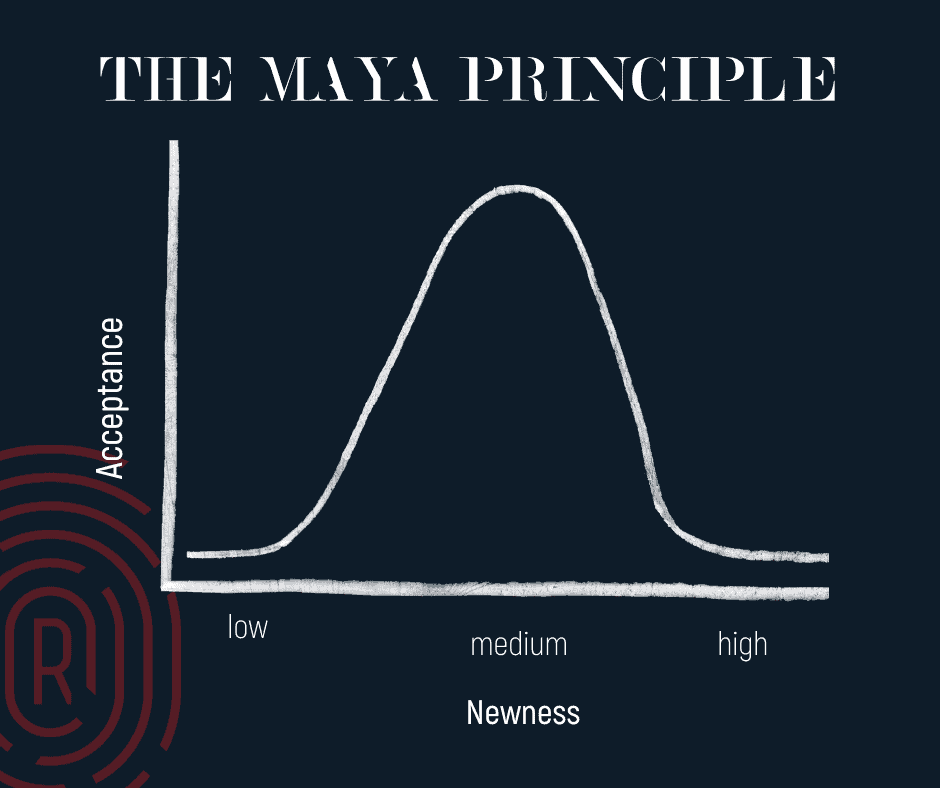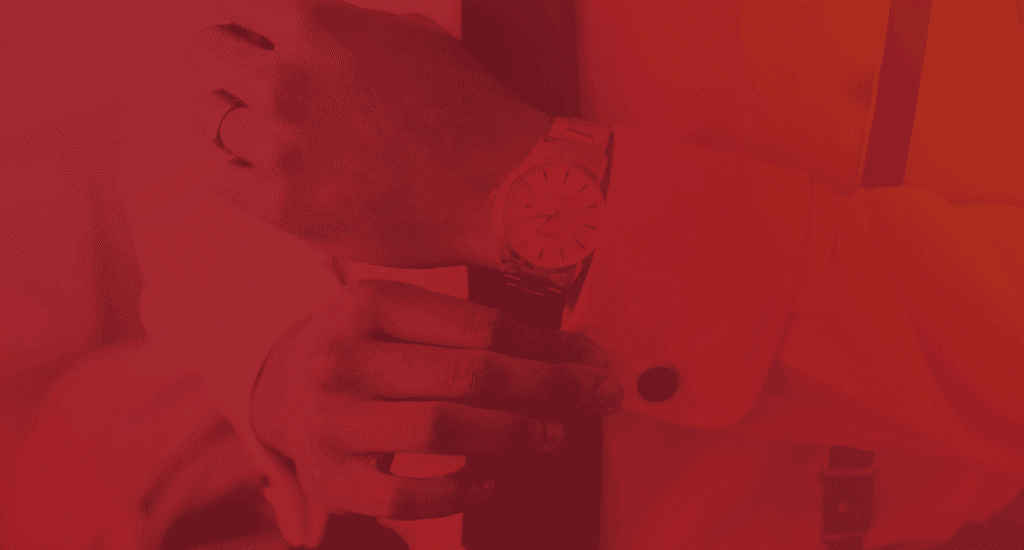- INSIGHTS
- Blog
How To Sell “Anything” With The MAYA Principle
The secret to selling is balancing your product or service design with your customers' or users' present skills and mindset. This isn't a new concept; it's a principle called MAYA.

Ever wonder why some new ideas or products are easier to adopt than others?
Why do some ideas and products seem innovative and exciting but fail?
We’ve seen this happen with products like Google Glass, the wearable (not so) smart glasses. The Google product was innovative and seemingly useful, so how could it fail?
The answer lies with the MAYA principle.
The MAYA Principle developed by industrial designer Raymond Loewy (1893-1986), also known as “the Father of industrial design” is adopted in product design, communication skills, sales theory, and more.
Loewy continues to teach product designers best design solution practices – finding the right balance between strong similarity, on the one hand, and a new skill and innovation on the other hand.
The secret to selling is finding the right balance between what your customers will embrace and accept while offering innovation. So, continue reading and become a better seller.
The MAYA Principle from the father of industrial design
The MAYA stands for: “Most Advanced, Yet Acceptable.” It’s a principle that provides users with enough familiarity, tapping into a person’s present skill level with enough new features that are easy to adopt.
Raymond Loewy’s impressive track record demonstrates the success of the MAYA principle. The Air Force One logo, the Coca-Cola bottle, the Shell Oil logo, the US Postal Service logo, and the Greyhound logo are some of his iconic designs that still exist today.
The adult public's taste is not necessarily ready to accept the logical solutions to their requirements if the solution implies too vast a departure from what they have been conditioned into accepting as the norm. - Raymond Loewy.
Essentially, Loewy believed that human preferences were torn between two things:
- Neophelia – the love of new things
- Neophobia – the fear of anything new.
He understood that people wanted things that were familiar with an element of novelty.
Let me explain this another way.
For example, imagine if the Galaxy Fold was released as the first smartphone. It would have failed.
Expecting phone users to adopt this type of technology from rotary and touch-tone phones tethered to their walls (or those giant cinder blocks like the original car phones) would be too far a leap for users to adopt.

The MAYA Principle in action - Apple
The best example of the MAYA principle in action is Apple.
Apple has released 34 versions of the iPhone since Steve Jobs released the original iPhone back in 2007.
If you were to compare the original 2007 iPhone in one hand and the newest iPhone 13SE in the other, you would have two very different phones that oddly resemble each other in many different ways.
Thirty-three versions of the iPhone later, users have seen changes like:
- Home button removal
- Headphone port removal
- Shape changes
- Size changes – bigger – smaller – thinner – bigger etc.
But, the familiarity remains:
- App icons remain squares with rounded corners
- The charging port location
- Apple logo position remains on the back and center of every iPhone.

The iPhone has come a long way in gradual steps, but oddly enough, the two phones still have a lot in common – advanced yet acceptable, delivering the future gradually.
That's been one of my mantras — focus and simplicity. Simple can be harder than complex: You have to work hard to get your thinking clean to make it simple. But it's worth it in the end because once you get there, you can move mountains. – Steve Jobs
It is no accident that the iPhone 13 SE still resembles a fifteen-year-old phone. Apple understood consumers want an optimally familiar, “advanced, yet acceptable.”
Sales Accelerator Process
Using the MAYA principle to sell
So, you may wonder how to use Loewy’s MAYA theory like Apple’s in sales theory. Here it is:
Step 1: Develop a strong understanding of what you're selling and how it works
You can’t familiarize your prospect with a product solution you’re not familiar with.
It may sound obvious —it is. But I can’t tell you how many sales representatives I have seen thinking they can get away with simply reading instructions, providing a list of advanced features, or talking about the product.
It is unacceptable for any sales representative in your business to read off a list of features. It is lazy and indicates to me that salesperson can’t sell. These salespeople will harm your company.

Step 2: Understand your prospect or the product users
You need to gauge what information your prospect can easily comprehend and where they will see value on their own.
It can also be explained by another psychological principle from the Soviet psychologist Lev Semyonovich Vygotsky, known as the Zone of Proximal Development (ZPD).
Put another way:
- The lower limit of the ZPD is the maximum level of innovation your audience can comprehend without your coaching, instruction, or guidance.
- The upper limit of the ZPD is the maximum level of innovation your audience can comprehend with the assistance of a more capable instructor (the salesperson).

You must meet your prospect in the reachable development zone – that sweet spot between the lower and upper limits.
Every client, prospect, and the deal situation is different – so do your research.
Ask yourself:
- Is your solution beyond the ability of your client or prospect to understand on their own?
- Worse, is your solution beyond the ability of your client or prospect to understand, even with your guidance?
Sales Accelerator Process
Step 3: Communicate the solution to your product
Avoid the mistake of “trying too hard” to make what you’re selling seem advanced and unique. You will scare them.
Your goal is to make sure your prospect understands the product or service enough to feel like it’s an acceptable solution and something familiar.
Avoid using big words or acronyms to describe features and services that the consumer might not know or understand.
Avoid lengthy explanations or instructions for a product or design; it’s lost on your customer.
Focus on providing solutions, not problems or a new challenge.
Loewy once said, “A lot of people are open to new things as long as they look like the old ones.”
If you master this idea, you will find that more people will be open to your solution – new concepts.
If you want to sell a product or idea, no matter how good or bad, make certain aspects of it seem familiar to your audience, and it will be successful.

What You Should Do Next
Is your sales team struggling to get your prospects to buy in? Yes.
Do you know how to find creative solutions to these issues preventing progress in your company? Can your sales team be innovative and familiar?
Do you think you can use MAYA to sell?
No. Then, your business needs help.
Let me be clear, if you were going to find the solution to your sales problems, you would have seen and solved them by now.
It’s likely you need support and help to solve them.
Rose Garden is solutions-focused, so if you want me and my team to ignite your revenue growth, we will do so with our Sales Accelerator Process and Team Assessment.

About the author:
Ali Mirza is the Founder & CEO of Rose Garden, a national sales consulting organization, and featured in Forbes, Inc, Business Insider, The Huffington Post, Business Rockstars, and The Wall Street Journal.
Ali is a highly sought-after public speaker presenting at multiple national conferences on innovative ways to accomplish transformational growth on your sales team.
Rose Garden provides unparalleled support and guidance to growth-minded founders via sales strategy differentiation, world-class sales culture creation, and exclusive playbooks, processes, and scripts to position them for limitless growth.
Related Posts:





